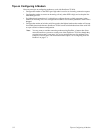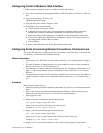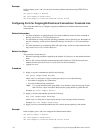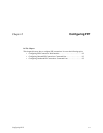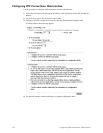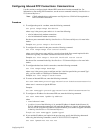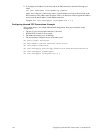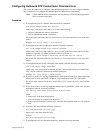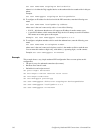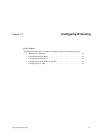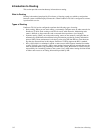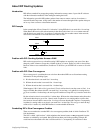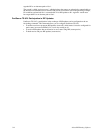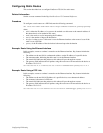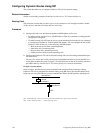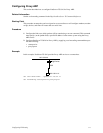8-6 Configuring Outbound PPP Connections: Command Line
set user name=name outgoing=on device=device
where device is either the Digi-supplied device or the outbound device created earlier in this pro-
cedure
Example:
set user name=pppout outgoing=on device=gendialer
8. To configure an IP address for the local end of the PPP connection, enter the following com-
mand:
set user name=name localipaddr=ip-address
where name is the user’s name and ip-address is one of the following:
• 0.0.0.0. , which means that the user will request an IP address from the remote server.
• A specific IP address, which means that the Digi device will attempt to use this IP address.
The remote server must agree to this request.
Example: set user name=pppout localipadr=0.0.0.0
9. To configure a telephone number to dial to reach the outbound user, enter the following com-
mand:
set user name=name n1=telephone-number
where name is the user’s name and telephone-number is the number to dial to reach the user.
You can enter this number as digits only, with dashes (-) separating digits, or with commas.
Example: set user name=pppout n1=4452624
Example
This example shows a very simple outbound PPP configuration. Here are some points on this
configuration:
• The port is set up for outbound connections (dev=mout).
• Hardware flow control is used.
• Default device and scripts are used
set ports range=3 device=mout
set flow range=3 ixon=off ixoff=off rts=on cts=on
set line range=3 baud=115000
set user name=pppout protocol=ppp
set user name=pppout dialout=on outgoing=on device=gendialer
set user name=pppout localipadr=0.0.0.0
set user name=pppout n1=4452624



